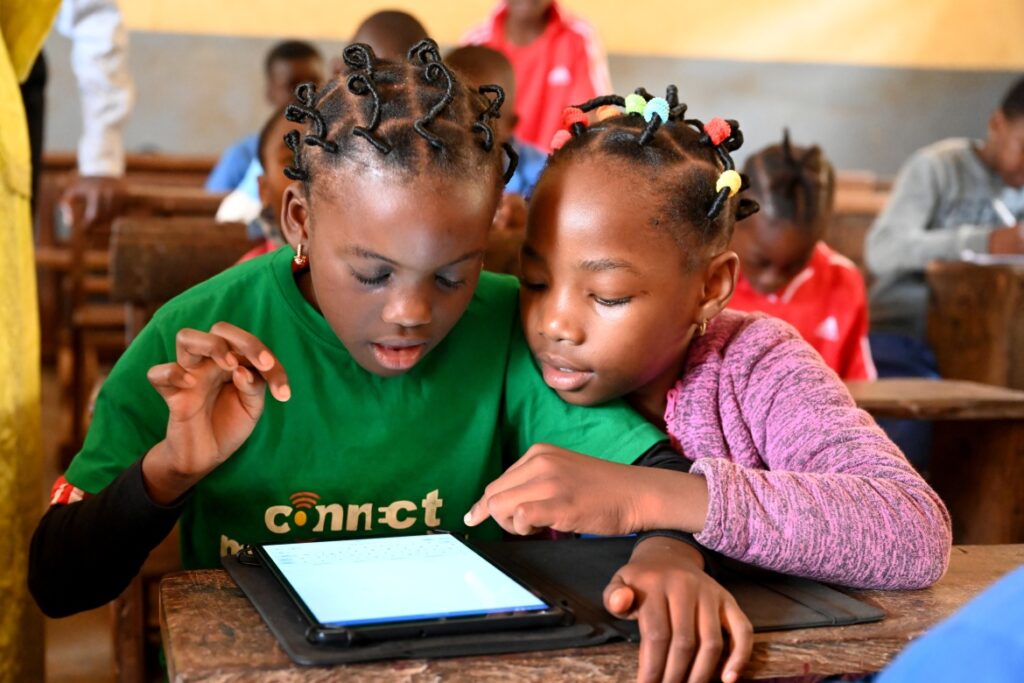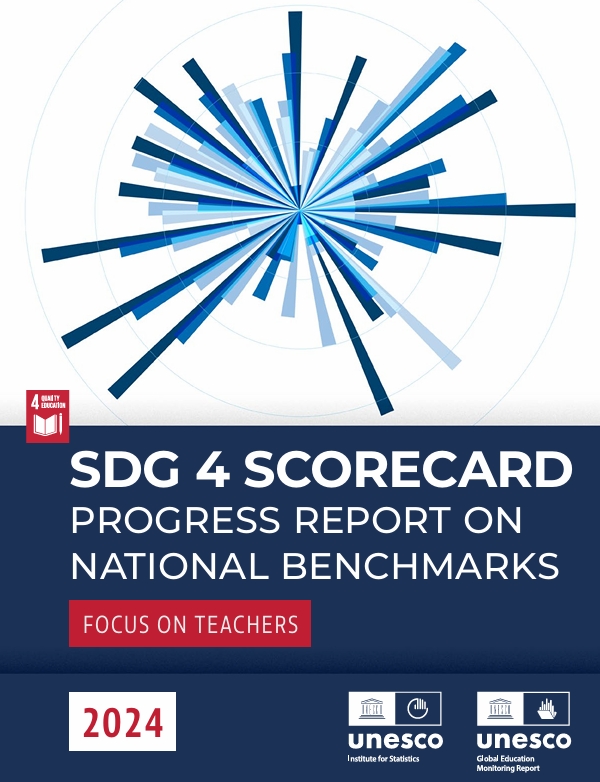A new guide published by the Education Development Center (EDC) examines various distance learning modalities and their impact on teachers' professional learning in low-resource contexts, and catalogues best practices for designing and delivering distance learning programs.
For educators across the globe, COVID-19 may be forever etched in our memories as it thrust professional development into uncharted territory—remote or distance learning. While the initial stages of this shift were colored by technical and instructional obstacles, over time, in many settings and for many teachers, satisfaction began to supersede frustration.
Many teachers discovered that they enjoyed learning remotely and embraced teaching via technology. Others ultimately found distance learning to be on par with in-person learning under certain circumstances (Burns, in press; Watkins, 2021).
Education systems, too, discovered they could provide teachers with more diverse and convenient professional learning opportunities by offering some or all of their offerings via distance technologies.
Thus, three years later, distance learning, alone or paired with in-person learning, has established itself as a popular alternative and complement to in-person learning. This significant shift has altered the frequency and format of teacher professional development in many parts of the globe (Burns, in press).
The rising popularity of distance courses, teachers’ embrace of distance-based professional development, and more diverse options for professional learning are certainly welcome. However, these shifts have not put to rest longstanding and legitimate concerns about the quality, relevance and impact of distance-based teacher professional development.
The promises—real and unfulfilled—of distance education for teachers
The Education Development Center confronts these issues in its latest publication, Distance Education for Teacher Training: Modes, Models and Methods, (which I authored) examining the worth and impact of distance learning for pre-and in-service teachers, particularly in low-resource contexts. The guide reviews various distance modalities and their impact on teachers' professional learning and catalogues best practices for designing and delivering distance learning programs.
EDC’s guide is premised on the belief that distance education will—and should—remain a viable professional learning option for teachers across the globe, particularly for those unable to access in-person educational opportunities. It celebrates the growth, popularity and increased satisfaction with distance learning options among university instructors, teachers and traditionally underserved communities (from refugee contexts to Arctic communities).
But it also voices concerns about many of distance education’s longstanding problems—its lack of evidence-based research on teacher learning in many forms of distance education (notably online and mobile learning) and the poor design and lack of preparation and support for the majority of the world’s distance instructors—all of which undermine distance learning’s quality, relevance and impact.

Shifting mindsets: Beyond technological solutions
Beneath the surface of these limitations lie deeper human and institutional assumptions, biases and misunderstandings that impede the effectiveness of distance learning—perhaps none more common than viewing online and mobile learning as substitutes for in-person education, versus distinct modes with unique strengths and limitations.
Thus, to ensure the worthiness of investments in distance education, the guide asks that those of us who fund, oversee and design distance-based professional learning examine our own assumptions about distance learning. To help with such an endeavor, this blog proposes that we consider the following points:
1. Distance education is teacher professional development
Distance professional development must adhere to the same rigorous standards as in-person education. It should foster growth in teachers’ knowledge, instructional practices, and student achievement. It should address the most critical aspects of effective teaching such as content knowledge, instruction, pedagogical content knowledge, learning and development, and efficacy and provide ample opportunities for practice and revision.
2. Technology is important but it is not the most important element in distance education
Technology plays a central role in distance education and the design of any distance education program should consider the available infrastructure, technology access, human capital and assessment systems. However, technology should not be the sole driver of a distance education program. A distance education platform is merely a piece of software, not an instructional approach or professional development curriculum. Technology must be leveraged to enhance and expand the reach of distance professional development, but it is the curriculum-based activities within the platform that deserve the most attention as they are what truly matters.
3. The ultimate goal of distance education is improved student learning
Teacher education, from initial training to continuing professional development, holds significant importance as the most direct and effective approach to school improvement (Fletcher-Wood & Zuccollo, 2020). The goal then of any form of teacher education, whether delivered in-person or via distance, must focus on enhancing teaching quality in order to improve students' knowledge and skills. Without an awareness of this goal and the provision of high-quality professional learning opportunities based on best practices that further this goal, distance learning programs risk failing teachers—and their students.
4. Distance programs must be mindful of the length, duration and complexity of the change process
Teacher professional development, regardless of the mode—online, in-person, or blended—requires change in teachers’ knowledge, skills, attitudes, beliefs, aptitudes, values and/or behaviors. These changes can be complex and are often met with resistance from individuals and institutions. Balancing the demand for rapid change with the intrinsic human resistance to change necessitates providing teachers with adequate time, understanding and ongoing support throughout the change process. It also requires that donors and implementers temper expectations and ambitions. Without this realization and support, attempting to implement change can become counterproductive, stressful and futile.
5. Quality matters—in every component of distance learning
As Distance Education for Teacher Training: Modes, Models and Methods reiterates, a focus on quality must foreground all elements of the distance education system—qualified and prepared instructors, well-designed courses and standards-based practices. Quality must be defined, implemented, and measured in all modes of distance education. This quality imperative is even more critical given the increased globalization of higher education and teacher professional development; the expansion of various forms of distance education, particularly hybrid and online learning, largely as a result of the COVID-19 pandemic; and the imperative to scale professional development in donor-funded programs.

In many cases, these programs are charged with upgrading a country's teaching force and support degree-granting teacher education programs. Thus, they must ensure that the distance programs they support adhere to exacting national or international standards and that quality is assured and evaluated through appropriate systems and frameworks.
The promise of distance professional development for teachers
Overcoming the challenges of distance teacher development depends on technical and methodological support and improvements. But this endeavor requires a transformation in our own beliefs about what distance education is, is not, and should be.
Emphasizing quality, understanding the complexity of change, and recognizing that technology alone cannot drive effective distance education are key. By embracing these principles, those who fund, manage, support and design teacher professional development can propel these programs forward in fulfilling their promise to provide impactful and high-quality teacher learning—in-person and via distance.






